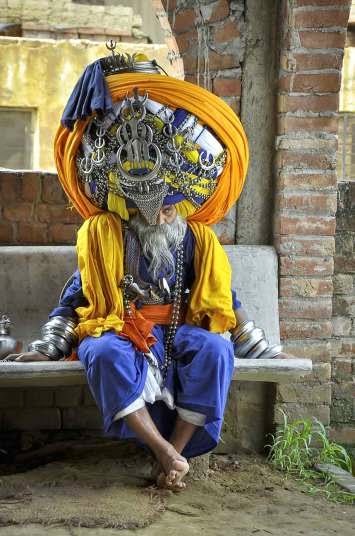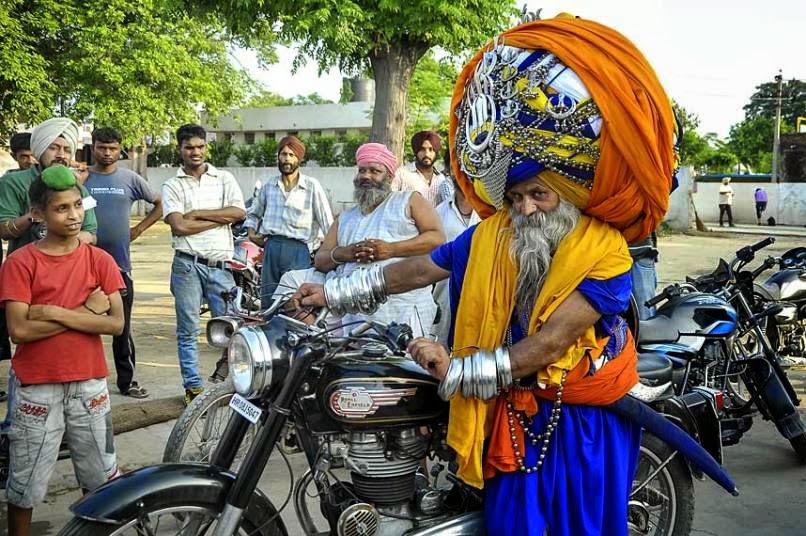LOS DIOSES
EN EL HINDUISMO
Sorprende ver las numerosas muestras de
religiosidad por parte de la gente a todas las horas,
desde que se levantan hasta que se van a dormir, y en todos los sitios. Por la
mañana en casi todos los hogares hindúes se venera a una divinidad determinada. Fuera de las casas, el
culto se realiza de camino o a la vuelta del trabajo en los templos o en las
numerosas capillas –a veces del tamaño de una casa de muñecas- que hay en las
ciudades y en el campo. Cualquier momento parece bueno para acercarse a los
numerosos dioses. El culto consiste en una puja, o acto
de devoción a un dios. Esta puja
a veces es una simple plegaria,
pero por lo general es un proceso más complejo que consiste en deambular
alrededor de la imagen del dios, o ofrecerle azúcar, leche, frutas, sándalo,
mantequilla o flores.
¿A
qué dioses alzan sus oraciones?
Es imposible conocerlos a todos, dioses hay
muchos en estas capillas y en sus templos. Cada uno sirve para alguna cosa y
cada uno tiene su momento adecuado en el día o en la vida. Algún autor ha
hablado de ellos como de “un panteón infinito”. Sin embargo, hay tres que son
los principales, porque a ellos se dedican los grandes templos y porque son
reconocidos y apreciados por la inmensa mayoría: Brahma, Shiva
y Vishnu, que
forman el Trimurti hindú.
אלים בהינדואיזים
מפתיע, מעניין ומדהים לראות את הביטויים הרבים לעיסוק
בדת בכל פינה בהודו, על ידי תושבייה ואמונתם כל אחד בדתו שלו.
בכל שעה משעות היממה, מעלות השחר ועד השעות הקטנות של הלילה, בכל מקום אנו יכולים למצוא ביטויי סגידה ותפילה. בשעות הבוקר כמעט כל בית הינדי
עורך טקס ומתפלל לאלוהות מסוימת, זו או אחרת. מחוץ לבתים הפולחן נעשה בדרך לעבודה
או ממנה, במקדשים או בקפלות הרבות, אשר לפעמים הן כה קטנות ממש בגודל של בית בובות,
אותן ניתן למצוא בכל עיר או כפר. כל שעה משעות היממה הינה טובה בכדי להתקרב ולזבוח
לאלים הרבים. הפוג'ה או הארטי הינן תפילות או אקט של התמסרות לאל שעורכים ההינדים,
לעתים זוהי תפילה פשוטה, אך בדרך כלל מדובר בתהליך מורכב יותר שכרוך בטקס המתבצע
סביב פסל האל, הכולל בתוכו הצעת מנחה כגון: סוכר, חלב, פירות, אבקת אלגום, חמאה או פרחים.
לאיזה אל או אלים נושאים ההינדים את
תפילותיהם?
בלתי אפשרי להכיר את כל האלים ההינדים, במקדשים ובקאפלות נמצא המון אלים ואלות
שונים. כל אל משמש ועוזר בנושא אחר ולכל אחד מהאלים החשובים יש את הזמן הראוי לו, הרגע, היום, או השעה המתאימה בחיים. בדת ההינדית ישנם 33 אלף אלים, מתוכם
כ-33 אלים חשובים. לעיתים מדברים עליהם כפנתאון אין סופי... יחד עם זאת, שלושה הם האלים
החשובים ביותר, הגדולים ביותר, אשר מרכיבים את המשולש הקדוש: בראהמה, וישנו
ושיווה. להם מוקדשים רוב המקדשים והתפילות והם המוכרים והמוערכים ביותר על ידי הרוב
הגדול של ההמון ההינדי.
REUTERS- Danish Siddiqui
Tags: Turismo femenino, mujeres viajeras, organización de viajes, viajes mujeres, viaje mujer India, viajes mujeres India, viajar sola, grupo mujeres, viajes organizados mujeres, encuentros de mujeres, viajes a medida India, viajes personalizados India.


.jpg)
.jpg)
.jpg)
.jpg)
.jpg)
.jpg)
.jpg)
.jpg)
.jpg)
.jpg)
.jpg)
.jpg)
.jpg)
.jpg)

.jpg)

.jpg)
.jpg)
.jpg)
.jpg)
.jpg)
.jpg)
.jpg)













.jpg)
.jpg)
.jpg)
.jpg)
.jpg)
.jpg)
.jpg)
.jpg)
.jpg)
.jpg)
.jpg)
.jpg)
.jpg)
.jpg)
